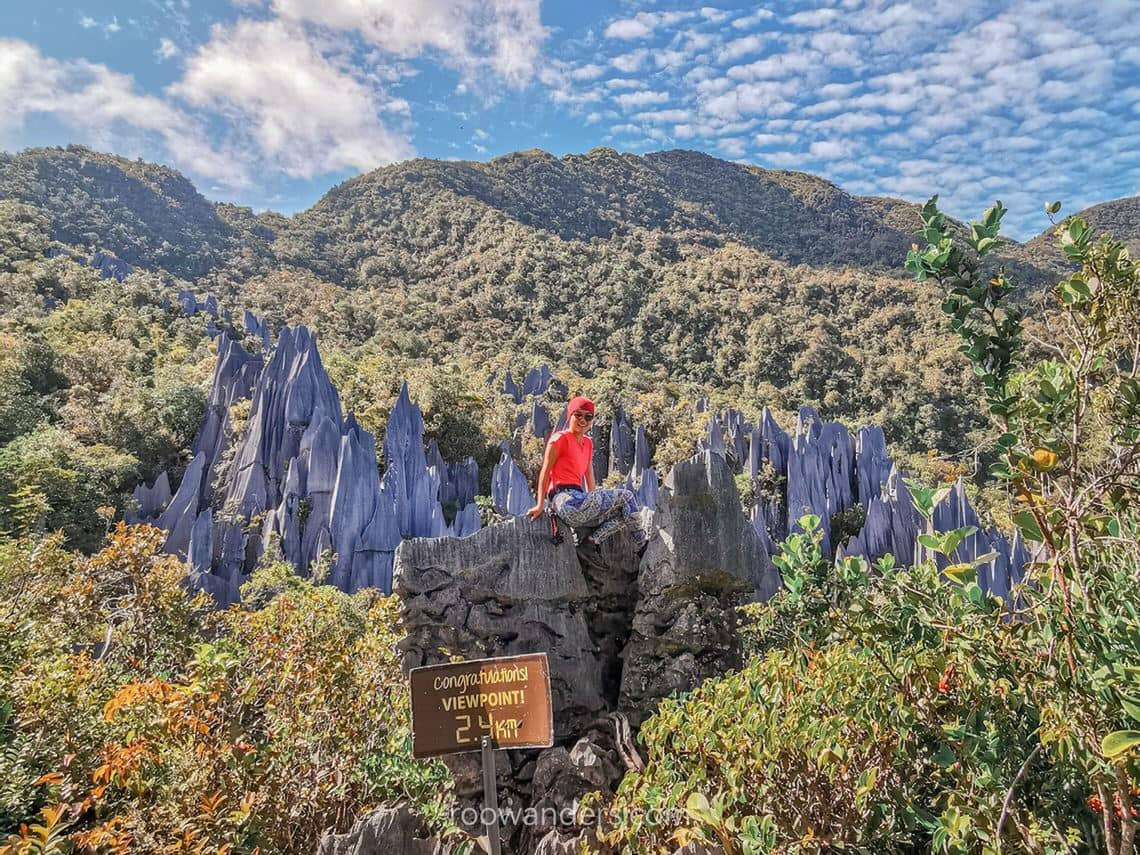
Hiking Mulu Pinnacles: The Most Challenging 2.4 km
Four days in Miri was more than enough.
An impromptu decision to land in Miri coupled with days of lousy weather foiled our attempts to explore the underwater world of Borneo. What could have been a three-day diving adventure morphed into days of indulgence. We ate like kings, had relaxing massages, and explored all the nooks and crannies of this city. Not forgetting a day trip to the UNESCO-nominated cave, Gua Niah.
Those four relaxing days were a contrast to what we would be experiencing in Mulu National Park. You could say climbing Gunung Api for the 100-ringgit visage of Mulu Pinnacles was the extreme opposite of the leisure we enjoyed.
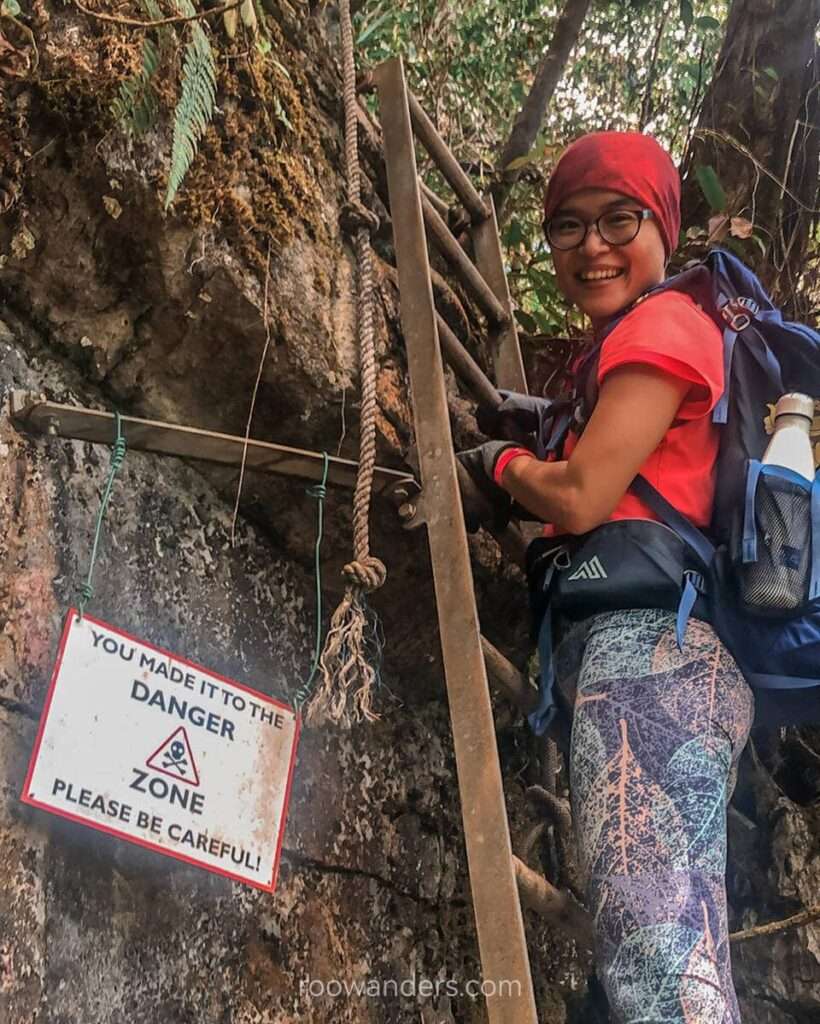
I visited Miri and the Mulu Pinnacles in Jul 2022. This post contains affiliate links that cost nothing to you but support my blog! It may also be updated periodically. As an Amazon Associate, I earn from qualifying purchases. Cheers!
The Pinnacles of Gunung Api
Located in the remote forest of Mulu National Park, the Pinnacles is a cluster of 50 m tall, jagged limestones that emerge from the heart of the jungle, halfway up the slopes of Gunung Api.
Some claimed that the track to see the thorns is much more challenging than climbing the tallest mountain in Malaysia and Southeast Asia – Mount Kinabalu.
I have yet to climb the sacred mountain but would update here if I do!
RM100
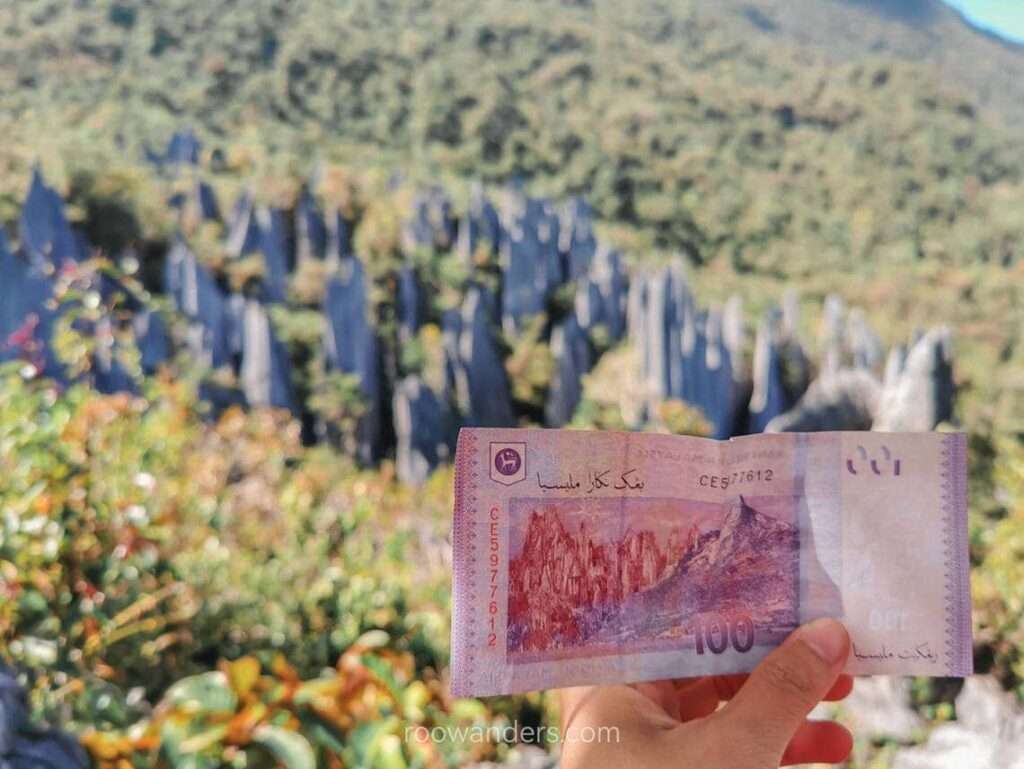
You could easily see the real-life inspiration of all the illustrations featured behind the current banknotes of Malaysia. All except the purple RM100; this takes a certain level of fitness.
RM100 features the UNESCO sites of Malaysia – the Pinnacles of Gunung Api and the majestic Mount Kinabalu.
Gunung Api
Api means fire in Malay.
According to our guide of the Berawan tribe, the mountain becomes ‘as hot as the fire’ in the afternoon. It is best to complete the Pinnacles Track before midday. A commenter suggested that the mountain is called Api as the stones that fall create sparks and in the process fire.
Getting There
You could only fly to Mulu National Park. Maswings have direct flights from Miri (30 mins), Kuching (1h 20 mins) and Kota Kinabalu (55 mins) every day.
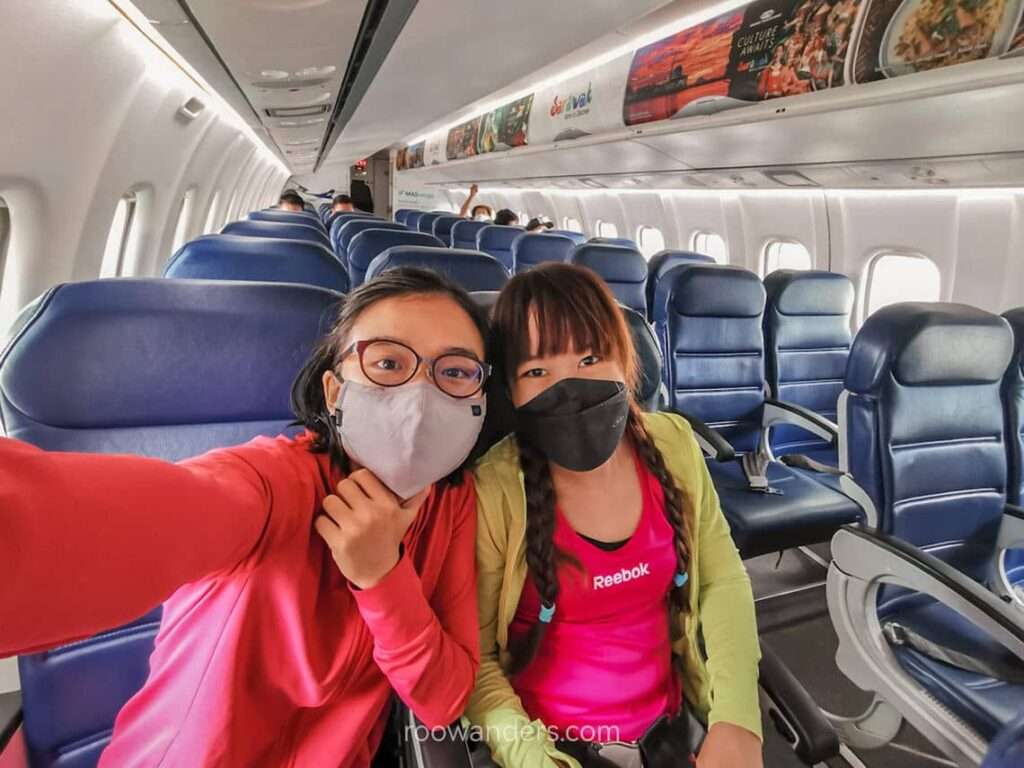
We took the 30 mins flight from Miri to Mulu, which felt more like a fun ride. Ten minutes up in the air, and tea – consisting of a cake and a drink – was served. We had barely started eating before the pilot announced we would be landing shortly. It costs us RM 280 (less than SGD 100) for a return flight.
Mulu National Park Pass
All visitors have to purchase a 5-day pass to enter the park. The pass is usually a plastic band tied around the wrist. I had a pink one but spotted some wearing blue bands on other days.
It costs RM30 for foreigners and RM15 for Malaysians.
Most of the treks in the park are guided and require additional fees.
The Trail
Day 1: Mulu National Park HQ – Kuala Litut jetty – Camp 5 | 9 km, 3 hours
As we had booked the entire trip with a tour group, there was nothing we needed to plan.
The first half of Day 1 saw us taking the long boat to a village marketplace and the two caves – Wind and Clearwater Caves. We had lunch by the Clearwater Cave before travelling against the current via a long boat to Kuala Litut.
Long Boat Journey
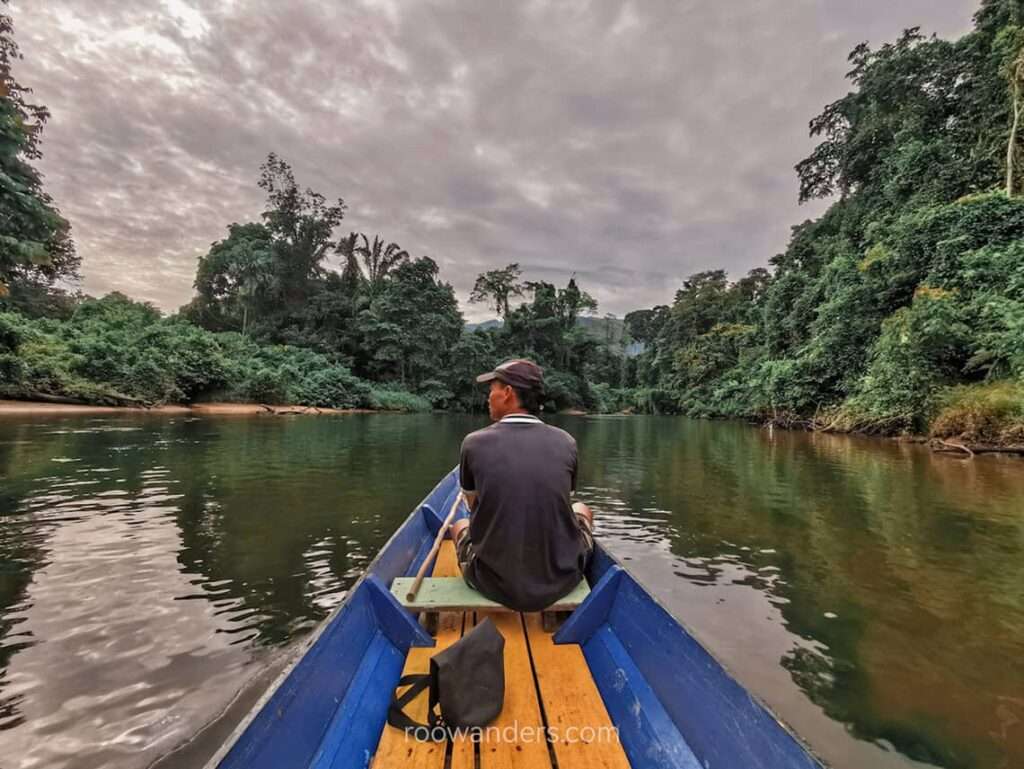
Our seasoned guide with a vast network of connections – everywhere he went, someone would greet him – managed to secure a boat with stronger motors, and we reached the site within 30 mins. Most websites claim the journey takes at least an hour.
During low tide or days without rain, you may have to get into the water to push the boat. But rainless dry days also meant no leeches in the forest.
9 km Trek
We changed from sandals/ slippers to proper hiking shoes for the long and easy walk on flat terrain to Camp 5. Along the way, we crossed two swing bridges, unlike the swing bridges I was used to in New Zealand. These have gaps by the sides so large that you could fall through. There was a small hilly section in the middle and dried muddy spots here and there but nothing too taxing on a dry afternoon.
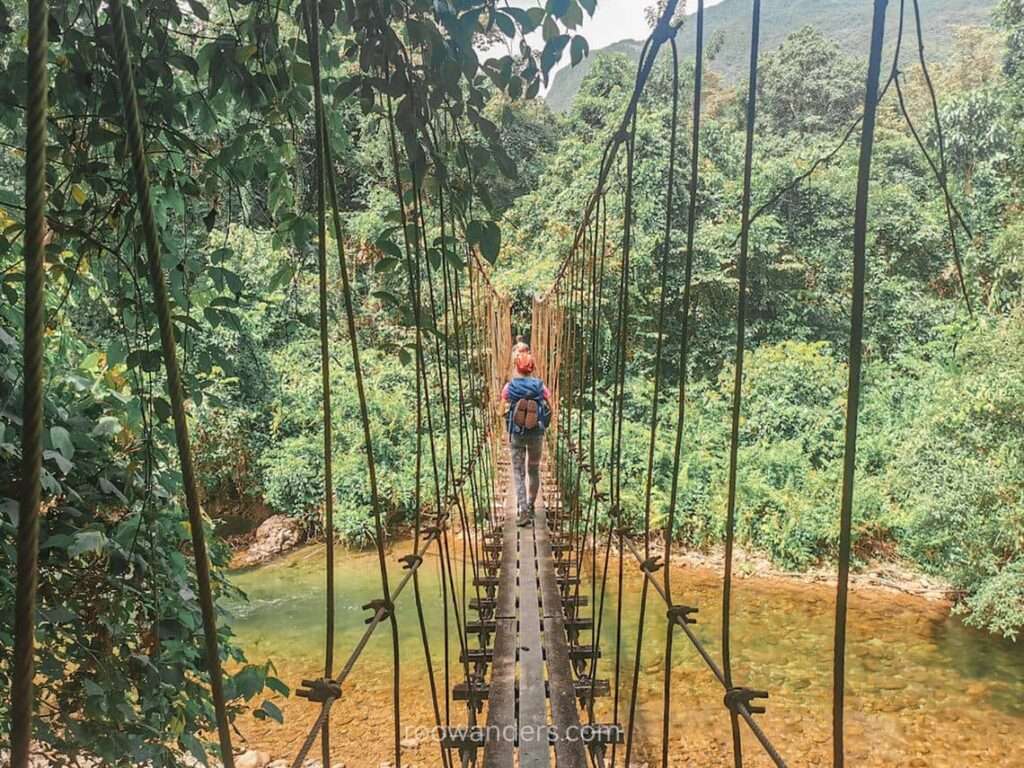
As we hiked closer to Camp 5, we spotted wooden signs indicating the distance left to our destination.
Camp 5
Camp 5 exceeded my expectations of a Malaysian hut. It was much more luxurious than the huts I have been to in New Zealand.
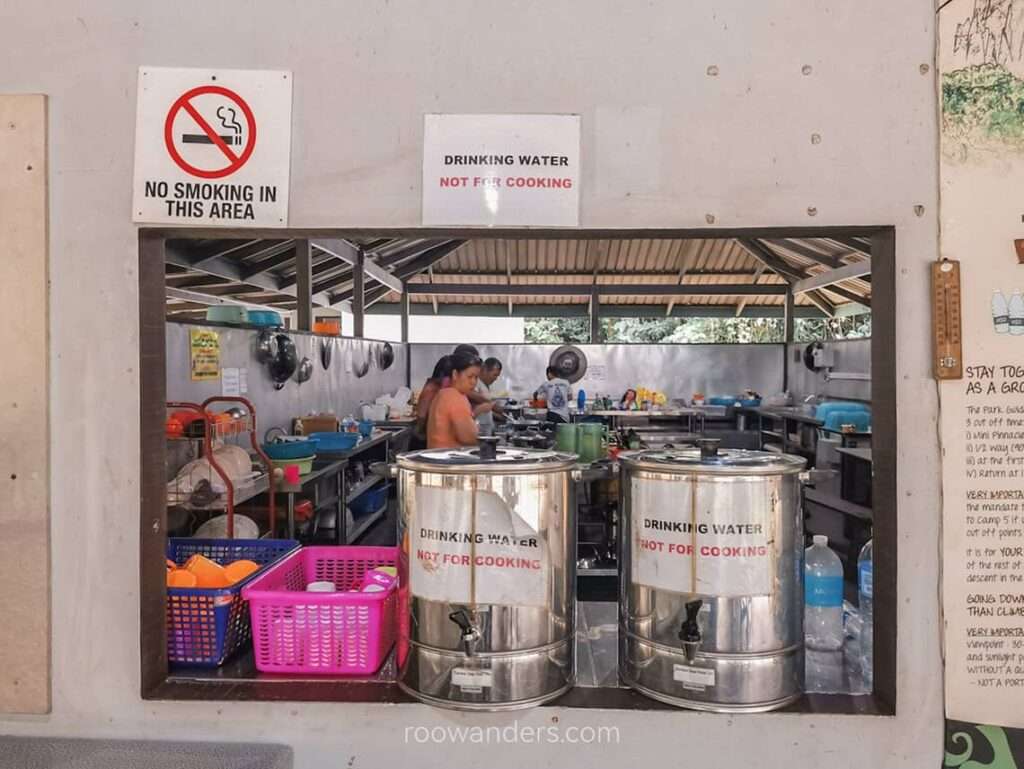
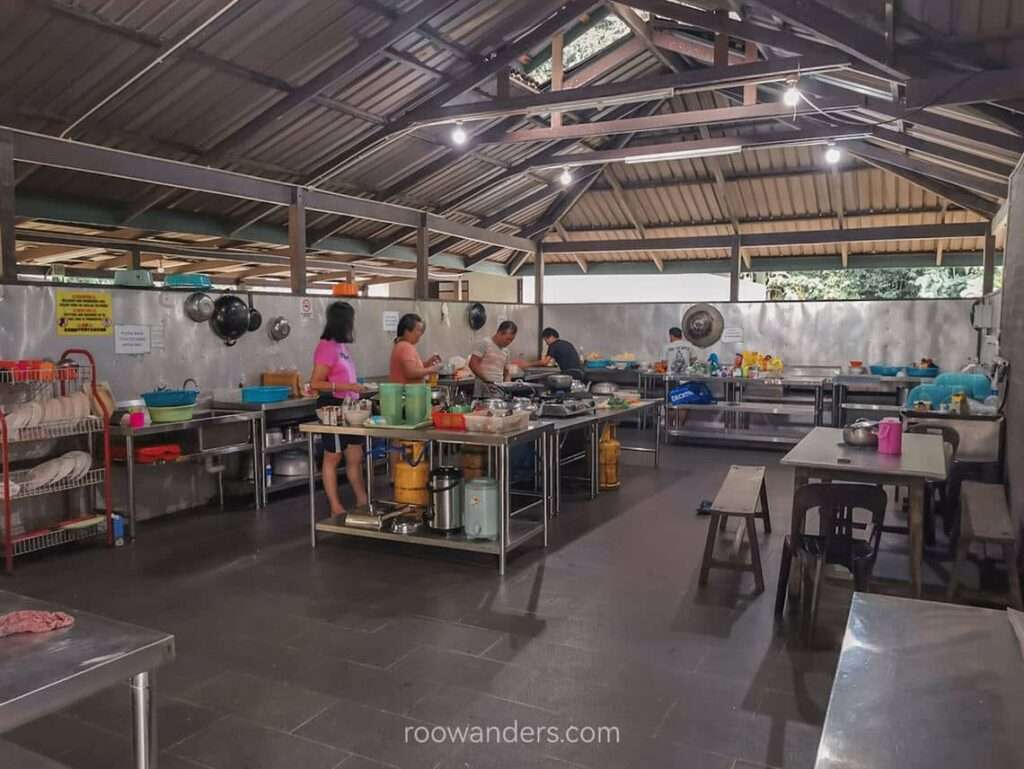
There were proper flushing toilets and showers, a working kitchen fitted with gas, a common dining area, and five rooms. The place has electricity, which means light at night.
The hut could hold up to 30 people per night across its rooms built on raised timber platforms with a roof and half walls but no windows or doors. Sleeping mats are provided, but not bedding and insect screens. The latter is highly recommended for good sleep, and you could rent the bedding and nets from the guide. It costs RM10 per person per night for the insect screens.
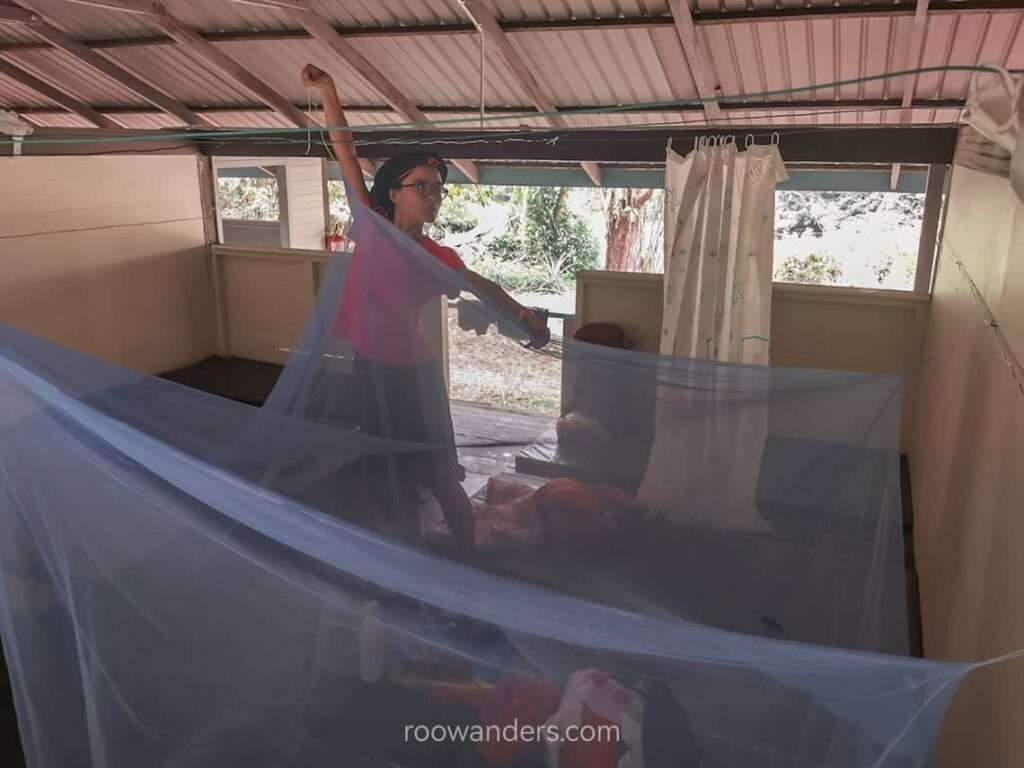
Nights in a Southeast Asian forest are usually not chilly, and you would be fine with a thin blanket or sarong as a cover.
We reached Camp 5 by 3 pm and spent the rest of the day relaxing by the cold waters of Melinau River, drying our sweaty clothes by the makeshift clothesline, and setting up our beds – generally enjoying the connection-free wilderness.
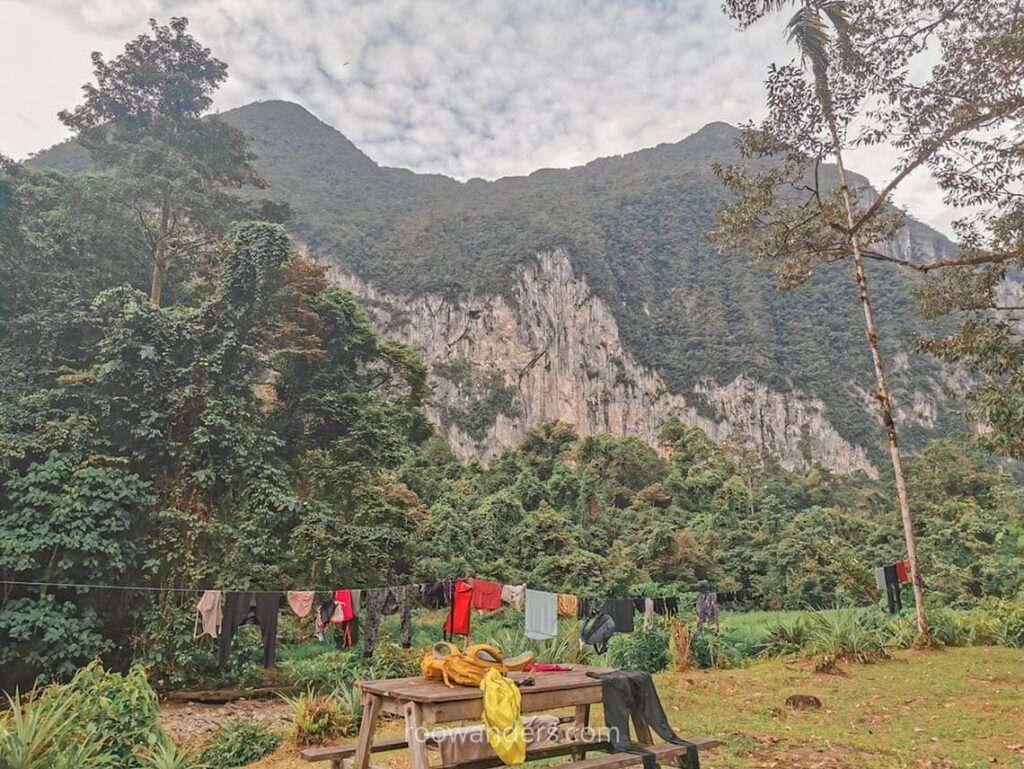
Dinner was three delicious sides with rice prepared by our guide-now-chef, followed by a platter of fruits as we eavesdropped on the stories of hikers who had completed the pinnacles that day. Everyone completed the arduous 2.4 km. The last person arrived at 7 pm with a nasty deep gash on her shin that required stitching. The woman said she had slipped at the start of the hike and cut herself on the razor-sharp rocks. I was surprised that her guide allowed her to continue, amazed by her persistence, and intimidated by her recount.
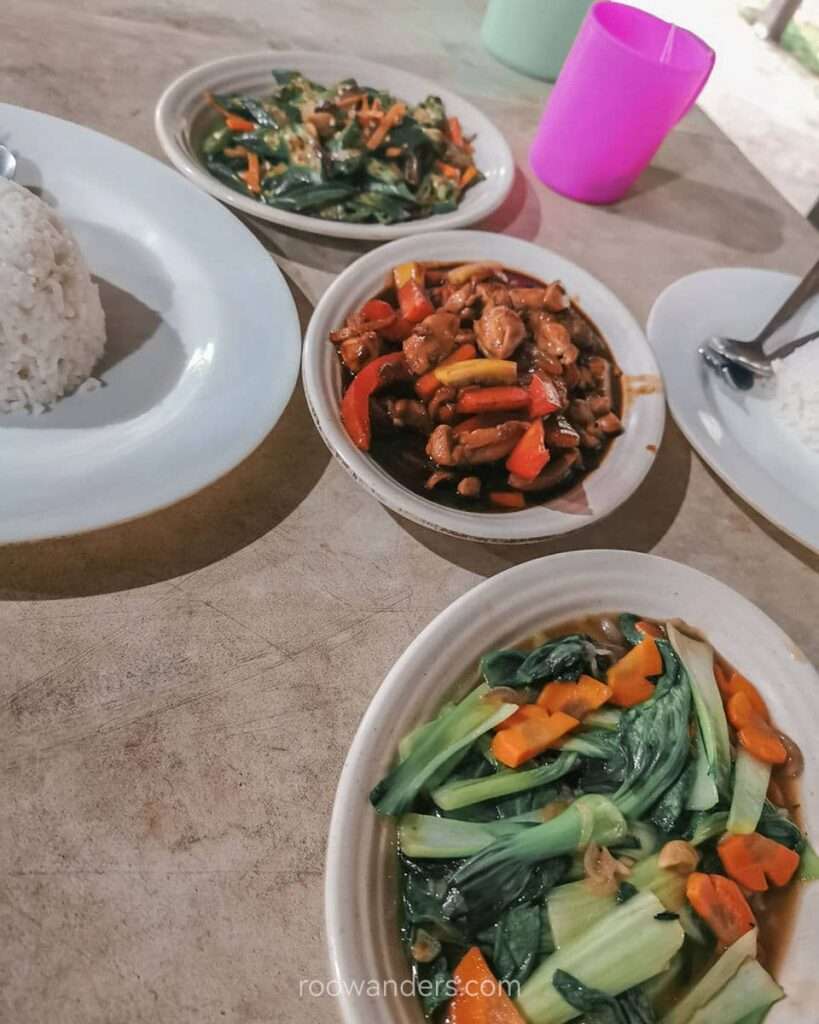
We break the day for an ‘early night’s rest’ after the briefing. But who could truly sleep well on the first night when Mother Nature’s orchestra was in full swing since sunset? We spotted a couple of bold fireflies streaming into our rooms.
Day 2: Camp 5 to Mulu Pinnacles Viewpoint
We left Camp 5 for Gunung Api slightly after 5.30 am. Breakfast was a plate of toast, egg and sausages.
I used to run 2.4 km within 14 mins for my NAPFA test, but this 2.4 km took me more than 8 hours. There are four stations to split the 2.4 km trek.
Station One: Mini Pinnacles – 900 m | 400 m A.S.L
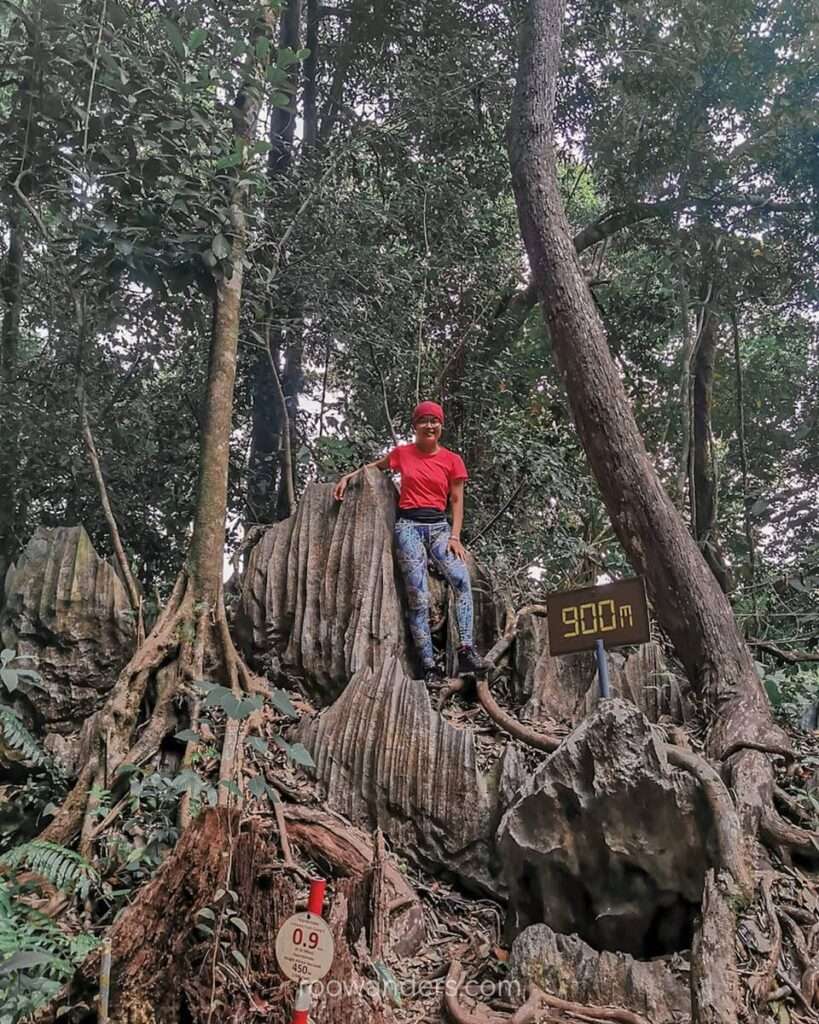
The cut-off point to reach Station One is an hour, and we went slightly overtime. It was exclusively steep steps of rocks and roots with trees as support to the mini pinnacles.
Station Two: Halfway Mark – 1.2 km | 600 m A.S.L
We reached station two about 30 minutes later. Paths were steeper and taut ropes tied around some areas provided additional leverage.
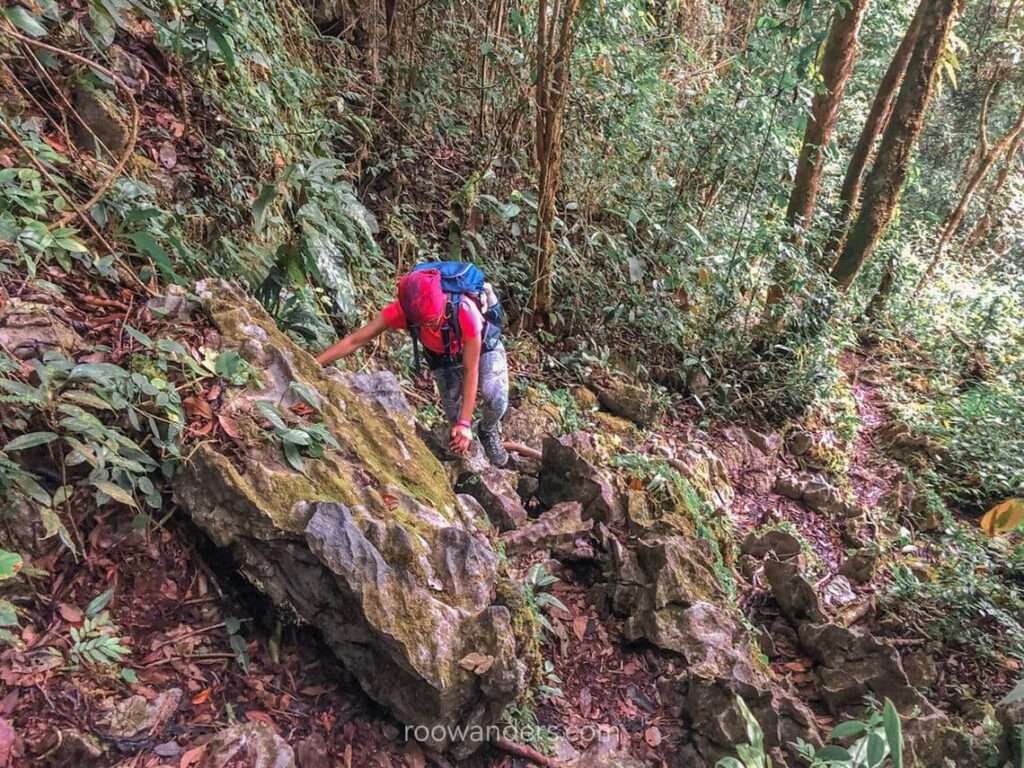
Hikers lighten their load at this station by leaving behind some of their water.
Station Three: Danger Zone, First Ladder – 2 km | 1000 m A.S.L

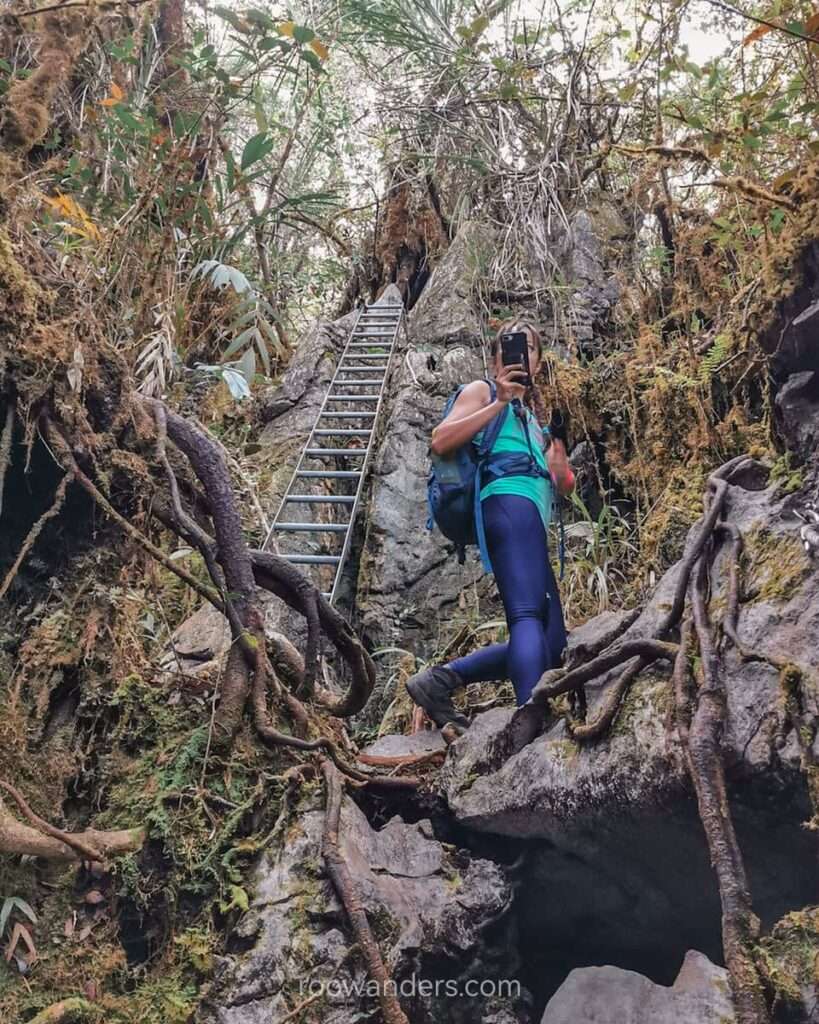
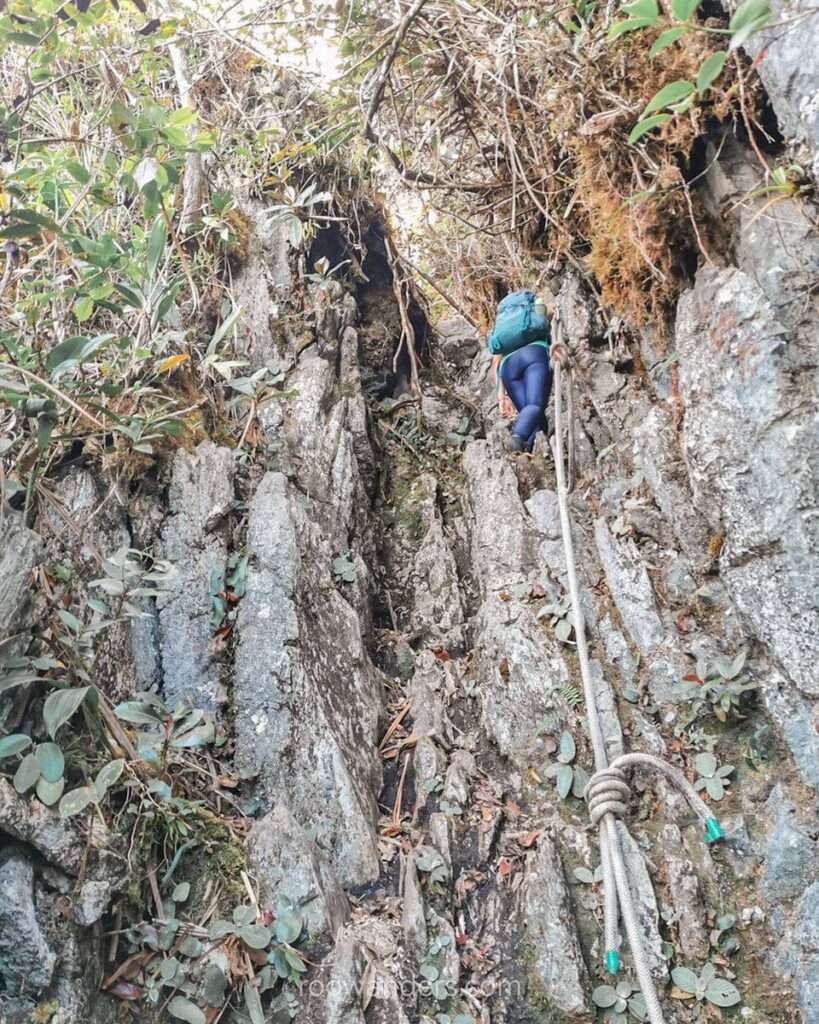
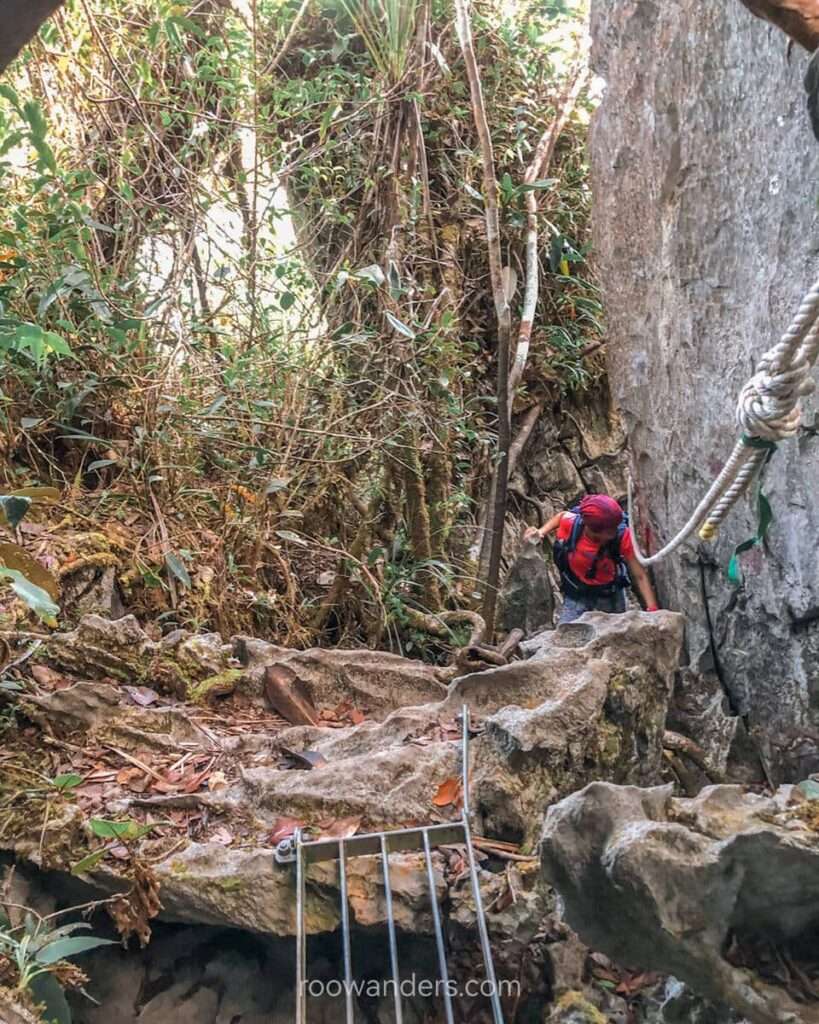
It took us slightly more than an hour to reach the first ladder with a warning sign and a chilling skull highlighting the danger we would be putting ourselves through. I was on heightened alert for the last 400 m as we scaled over rock walls, balanced across metal bridges in between boulders, and climbed over 17 more precariously-perched ladders.
Station Four: The Viewpoint – 2.4 km | 1200 A.S.L
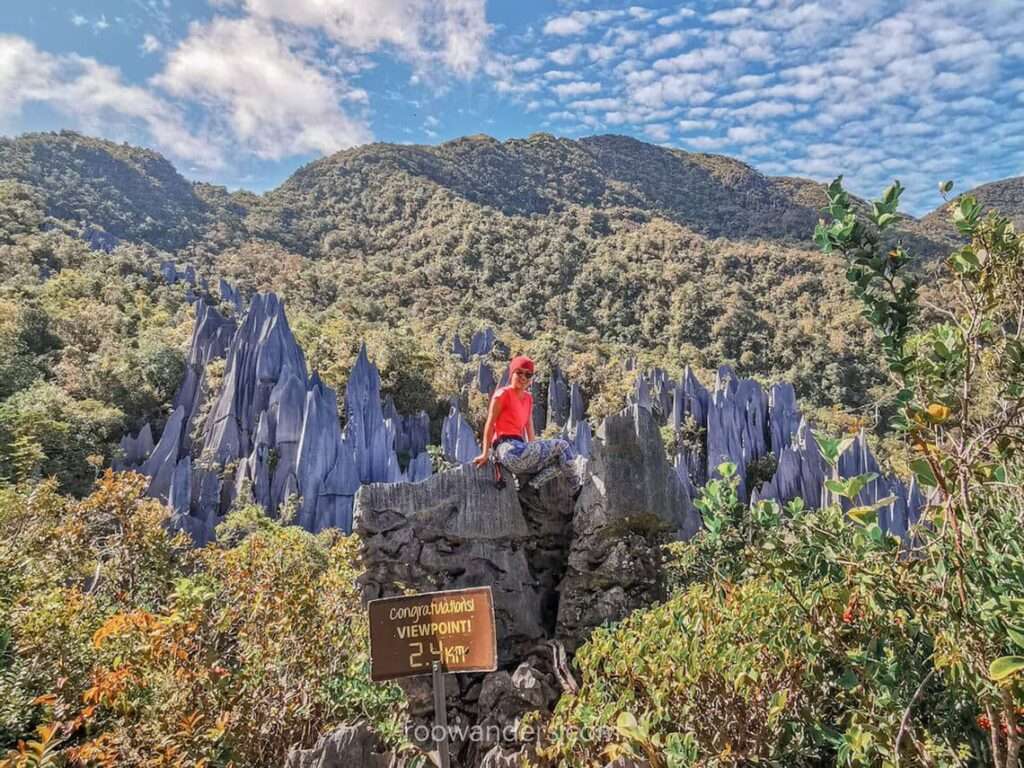
It was more relief than joy when we reached the viewpoint at 9.30 am. My senses were still tingling as we marvelled at the sight. The 50 m tall thorns were unlike the Pinnacles at Coromandel, New Zealand. Pinnacles at Mulu are deadlier looking and ten times harder to reach.
We spent almost an hour at the top having our packed lunch – fried rice and an egg – before it grew too hot. Time to face the frightening descent!
Descent
The brochure says that the descent takes twice the effort, and they were right. For every steep step I took to ascend, the back of my mind would subconsciously tabulate the difficulty I would face on this very step when I descend.
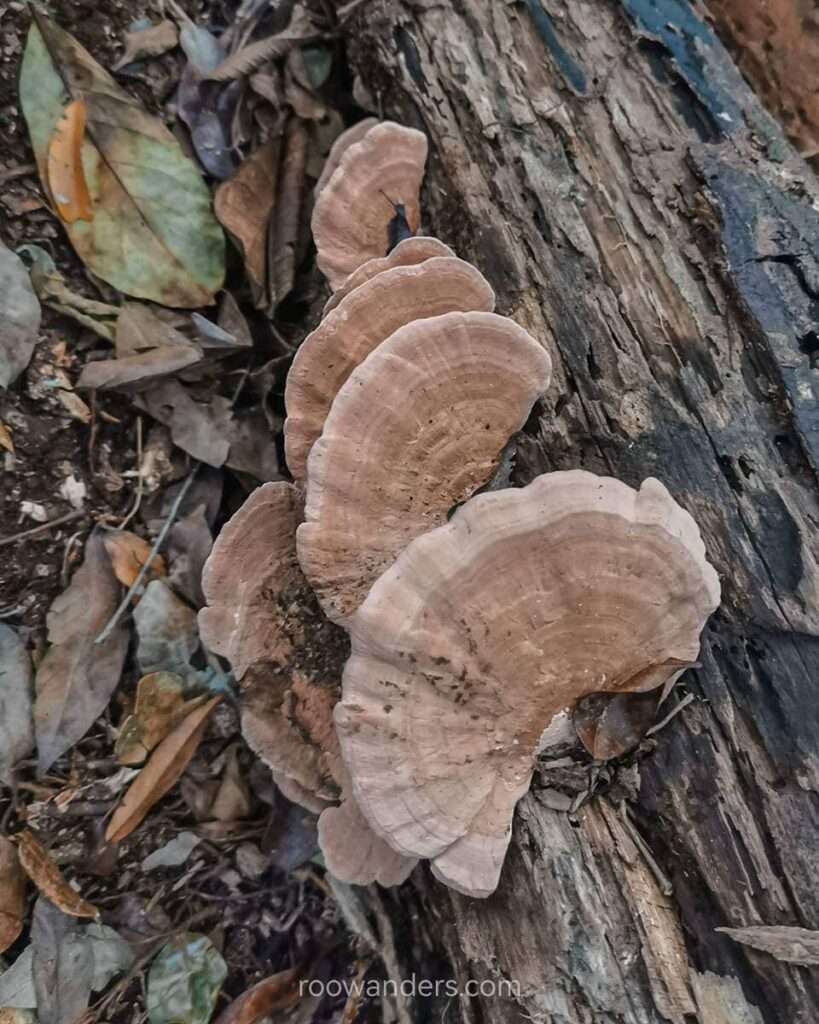
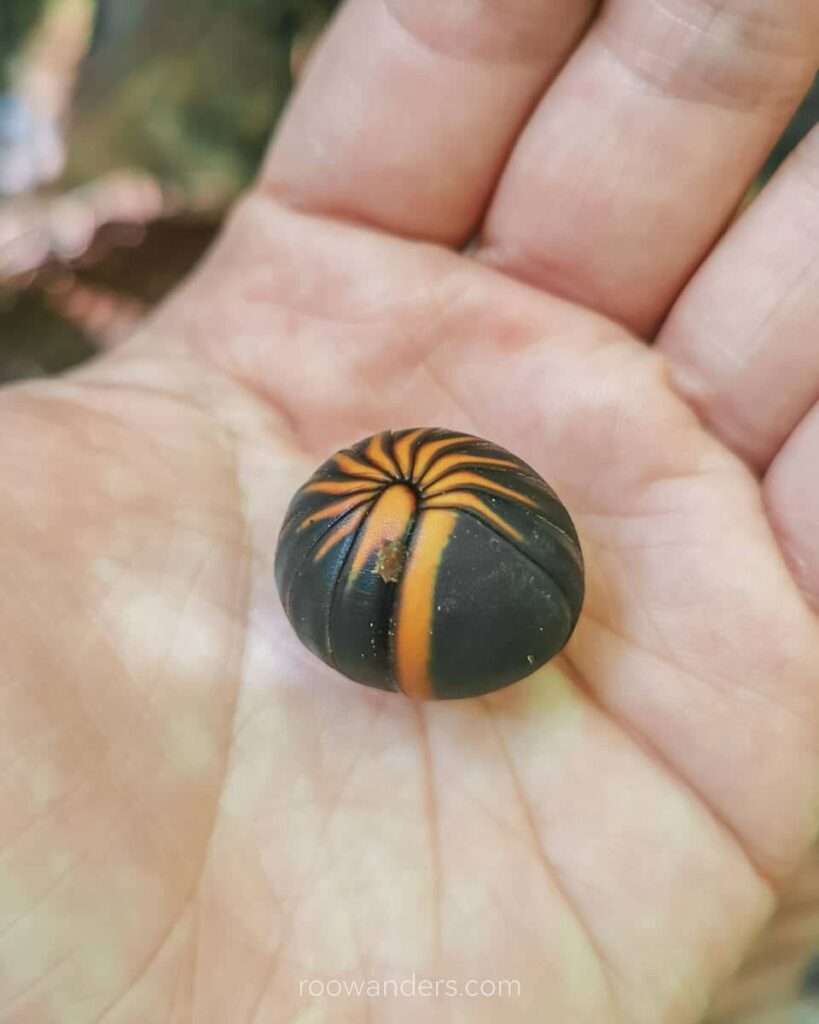
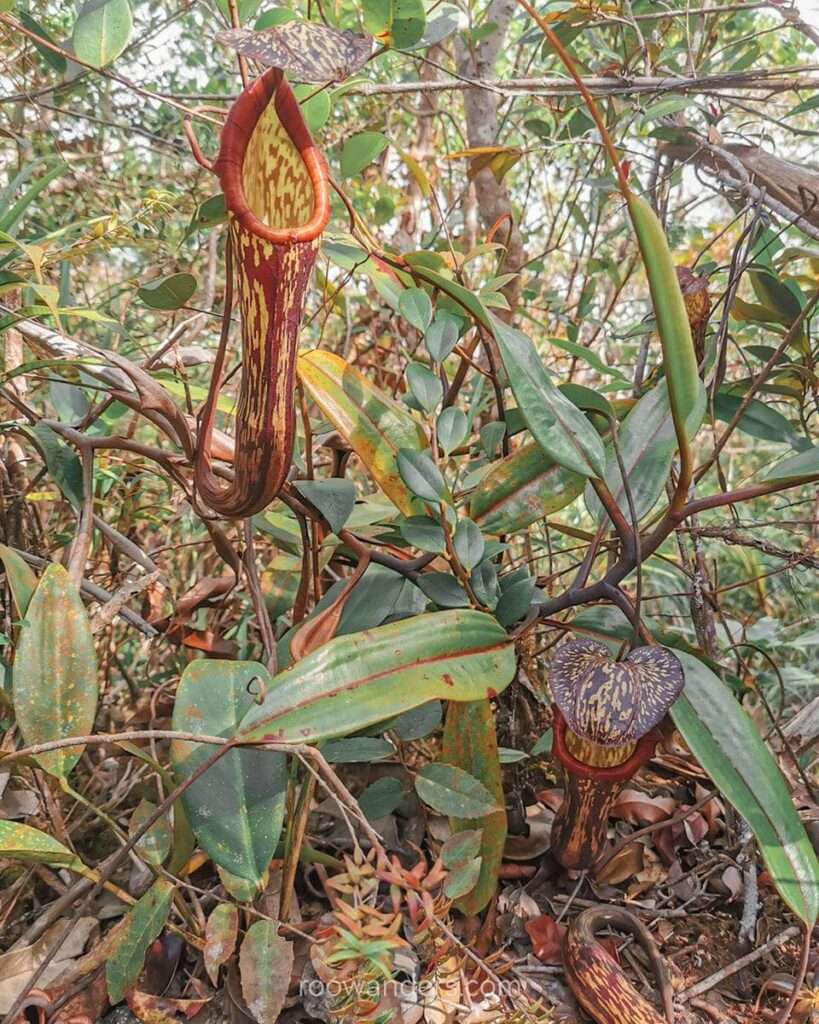
We climbed backwards for all ladders and rock walls to reach the halfway mark. That remaining hydration was critical for descent as the day grew warmer and humid.
Hikers as fit as our guide would effortlessly glide down the steep steps, whereas people like us who have not trained rigorously would continue to descend backwards or exhaust our arms with countless dips.
A pair of trembling quads from descending all those steep steps, coupled with the accumulated exhaustion make anyone precarious to slips and falls. I was surprised to find myself unscathed when we returned to Camp 5 at 2.30 pm.
Day 3: Camp 5 to Kuala Litut
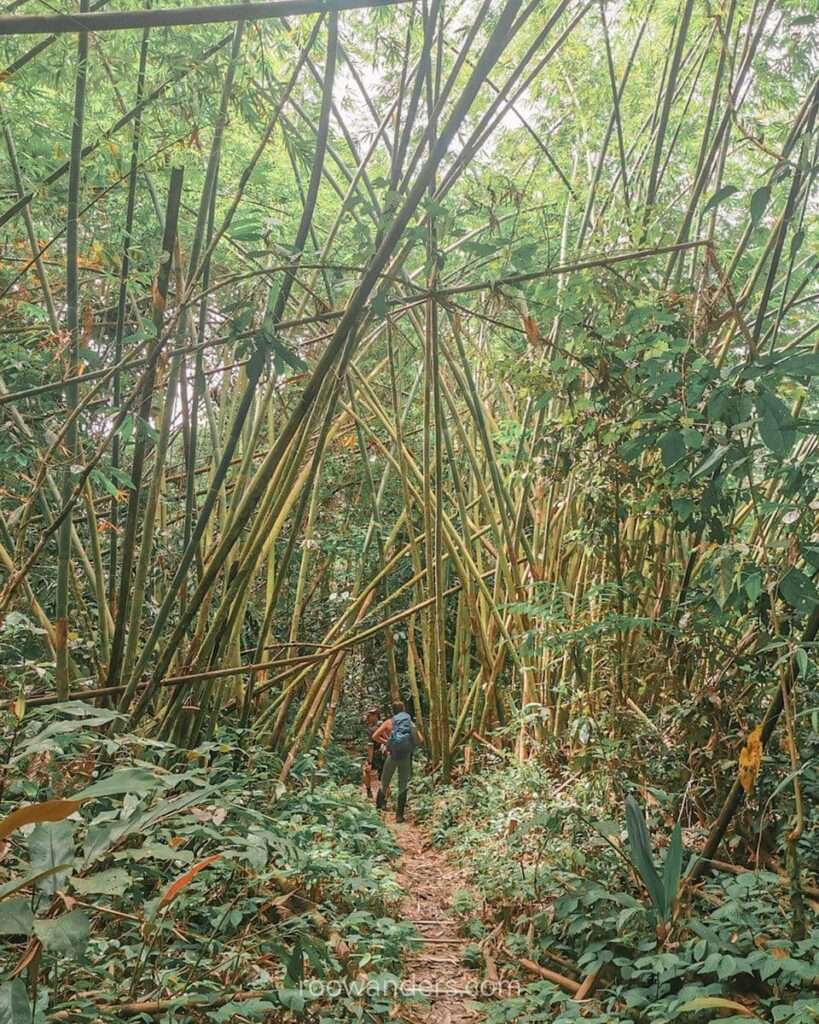
My quads still quivered for descents of any kind, but the 9 km walk on flat terrain somehow soothes the overworked muscles a little. We had our last sumptuous packed lunch prepared by the guide at the Clearwater cave and reached Mulu National Park at 1 pm. Can’t wait for our massage in Miri the next day!
Other Essential Notes
Accommodation
In the National Park
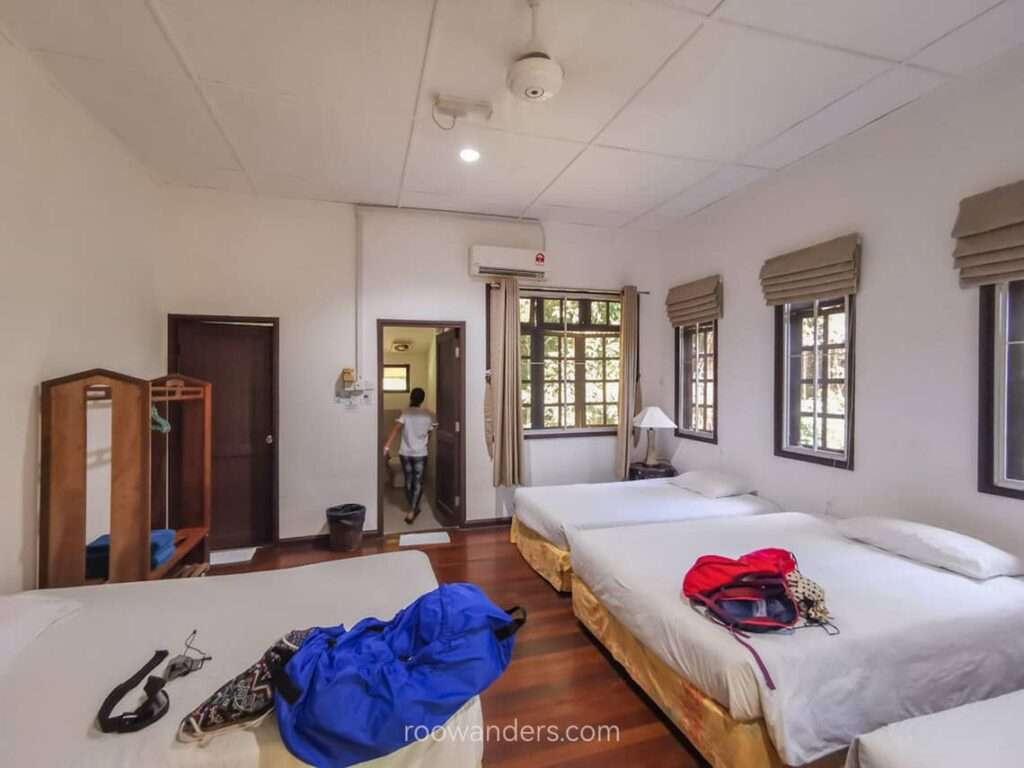
We stayed in the National Park on the nights before and after the pinnacles. There are several options to go with – from hostel beds to bungalows. As the prices are reasonable for the facilities and convenience, these places tend to be very popular. Book in advance to avoid disappointment. The National Park has a cafe. Prices tend to err on the expensive side since food is mostly flown in.
Marriott Mulu
If you are looking for a 5-star hotel, there is a Marriott right around the corner from the National Park.
Homestay/ Hostel
A handful of basic homestays and backpackers are located outside the National Park. Check out AA Homestay and the Mulu Village. Both have excellent reviews.
Ways to Do This Hike
We went with a tour package, so our prices tend to err on the premium side. You could bring the cost down by planning early and doing your homework. Time was short for us when we booked our trip, and we wanted to make it happen.
With a Tour
One major perk of having a private tour was the level of treatment we received. We had VIP privileges and were always the first to reach the caves and various sites. Insect nets and bedding were included in our Pinnacles hike, and our meals at Camp 5, the Pinnacles and the clearwater cave were delicious.
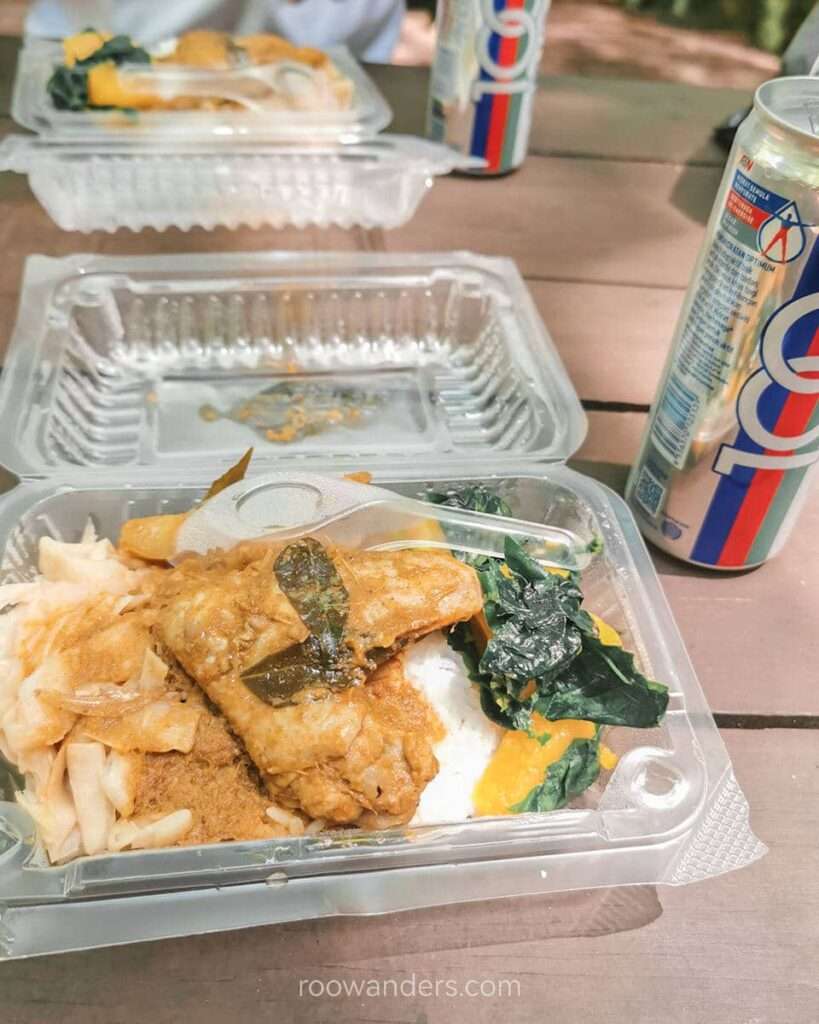
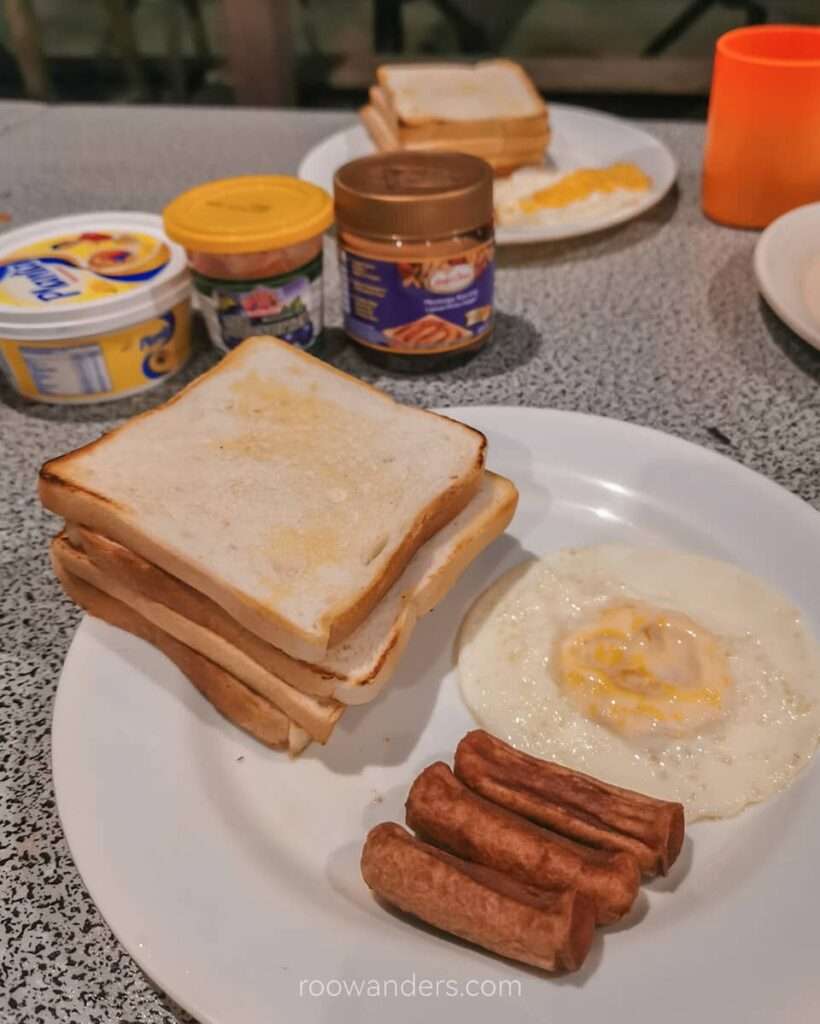
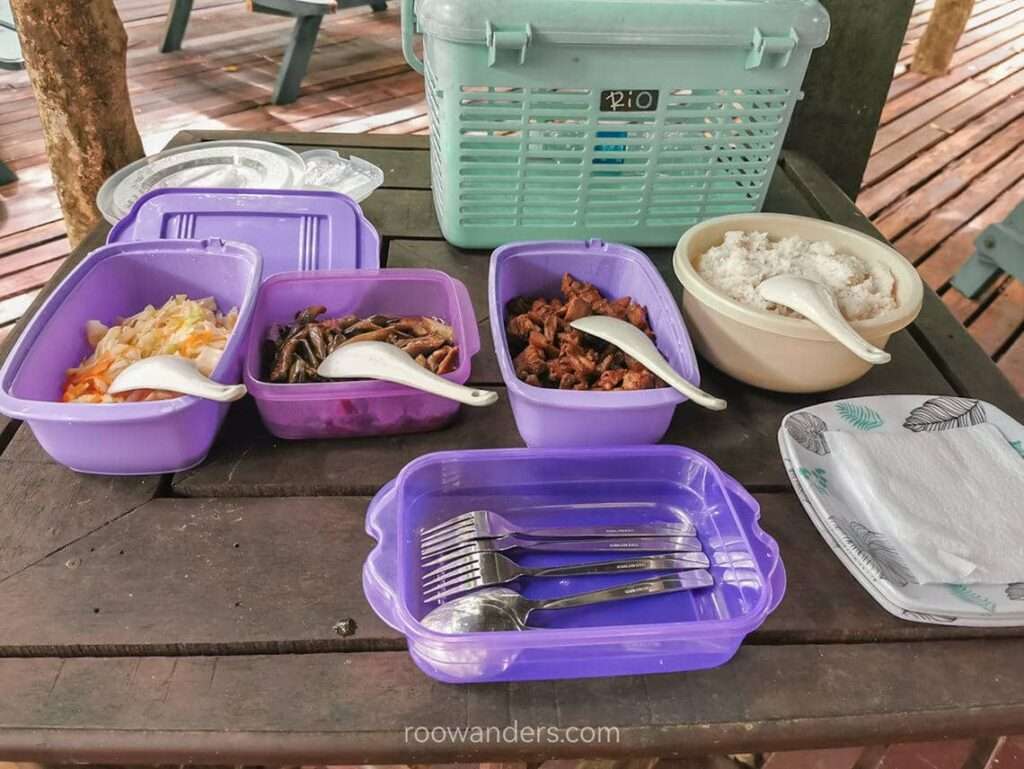
Independent
Independent hikers could enquire with the Mulu National Park months before their expedition to secure all the necessary accommodations, guides and passes. A 3D2N tour to the Pinnacles costs RM 443 per person for a guide, the boat and camp fees. You would have to bring in food.
To Brings
- Comfortable hiking bag. I carried my 48 L Gregory since we were travelling light and were backpacking Miri-Mulu. It came in handy for the 3 L of water up the pinnacles. We left unnecessary baggage in Mulu National Park and Camp 5.
- Proper hiking shoes. You will not be allowed to hike up the pinnacles in sandals for safety reasons. I wore a Merrell Gore Tex mid-cut for additional ankle support.
- Sandals/ slippers. For the boat rides and in Camp 5
- Headlamp. Since the hike begins in darkness before sunrise.
- First aid kit. In case you get cuts or bruises like the lady above.
- Whistle. I like to tie a whistle to my bag when I hike in case I need help.
- Gloves. My garden gloves against the sharp thorns of roses as a flower packer in NZ came in handy against the sharp limestone rocks.
- Waterproof outer shell/ raincoat. When it rains in Southeast Asia, it pours.
- Jacket. It can still get a little chilly in the morning. Uniqlo Mesh UV Protection Jacket is my go-to light jacket that doubles as a UV-protection cover.
- Small camera. I brought my trusty old GoPro 8 for videos. My Huawei P30 pro secured in a Decathlon waist pouch helps in photos.
- Earplugs. If you are a light sleeper.
- Sleeping bag/ light blanket and insect net. For camp 5 if you do not intend to rent. I used my sleeping bag liner.
- Insect repellant and ointments. Mopiko came in handy.
- Sun Protection. During the long boat rides
- Three sets of clothes. Ideally three sets, but the minimal two works for me. I wore one, brought one, and rinsed and dried the soiled one at the end of the day.
- Towel, toiletries, swimwear. Dipping in the cold river water soothes the muscles.
- Powerbank/ batteries. For the power-hungry gadgets. There will not be any telco services in the forest.
- Food for the entire trip. If you are doing it independently
- Power bars/ snacks. To boost your energy level
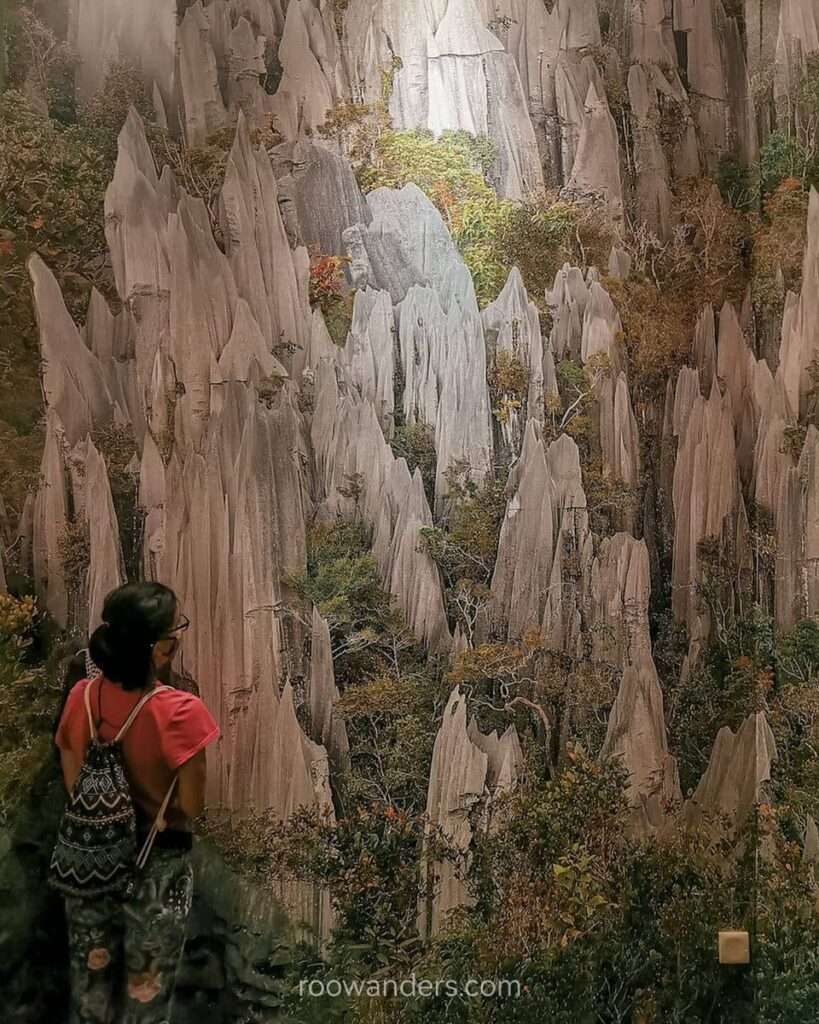
More Pointers to Take Note!
- Boiled water is available in Camp 5
- There may be spare plastic bottles in the kitchen to carry the 3 L of water
- Start as early as you possibly can to beat the afternoon heat and humidity
- You will perspire a lot, which explains the 3 L of water
- An RM100 note as a comparison against the real pinnacles
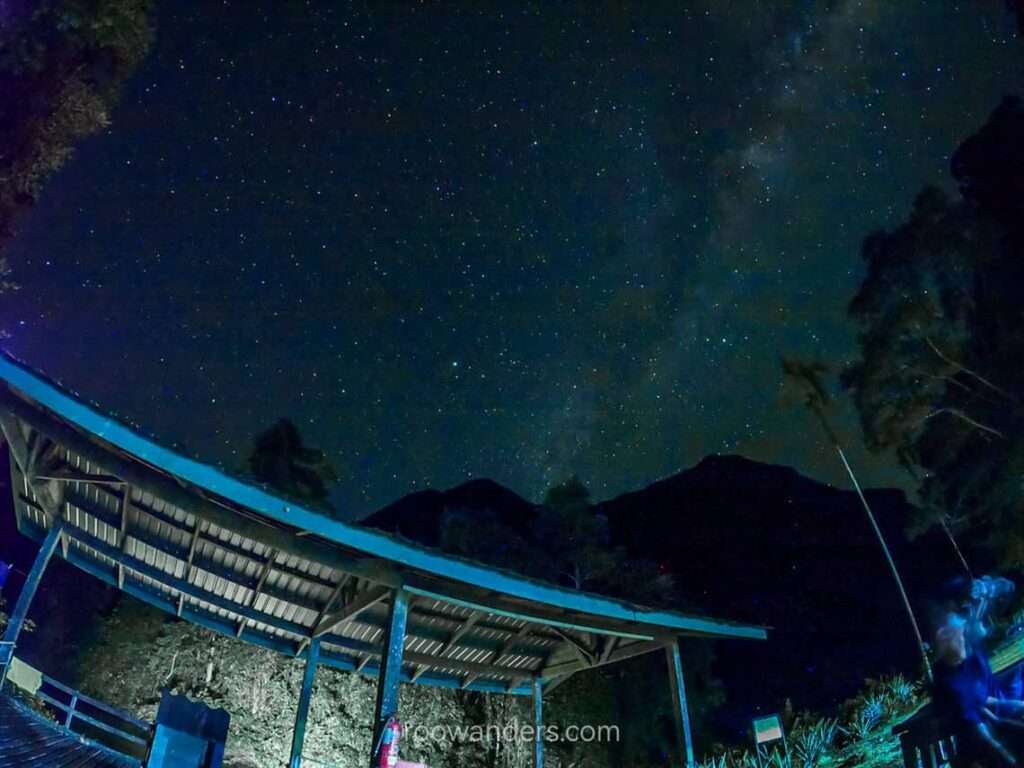
Hiking Gunung Api was no doubt one of my most terrifying yet exciting climbs. Danger lurks at every steep section of protruding rocks, and the intensity could only increase ten-fold for the last 400 m. But what made this fearsome 2.4 km route different was exactly those difficult spots where we had to figure out the right place to step or the right root or rocks to grab. This experience was comparable to scaling the steep sides of Mount Taranaki in New Zealand, which took me 10 hours for a return trip on the volcano.
The Pinnacles were the cherry on the cake. You would do well with some hiking experience and a moderate fitness level.





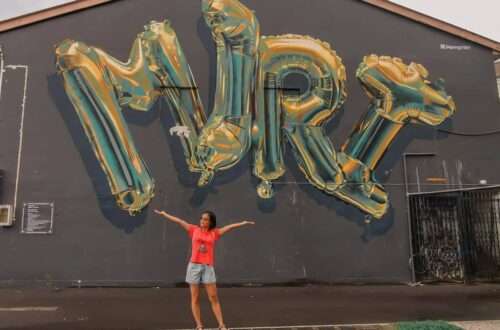
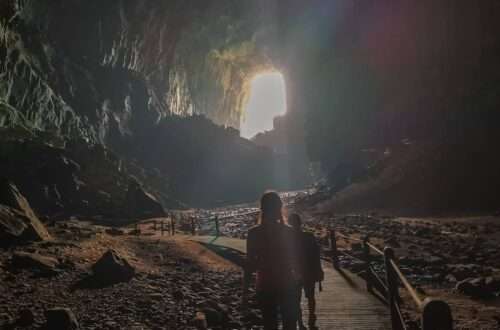
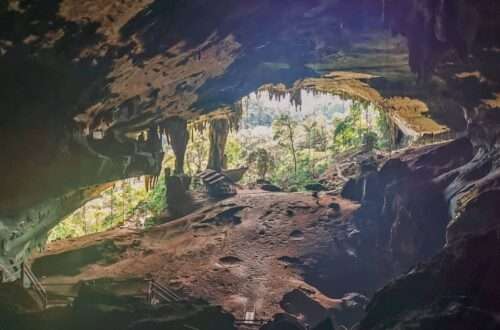
2 Comments
NC
Perawan “Berawan”
I think its called gunung api due to when some of the stones fall below it creates sparks and can causes fire. Hence the name gunung Api
Roo
ah, I see. I was figuring out our guide’s pronunciation. Thanks for the tip!